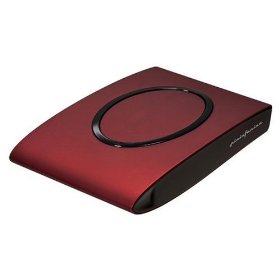Black Friday
Some of the best deals on electronics always come on Black Friday, the day after Thanksgiving. So I looked forward to seeing the ads on Thursday and planning my shopping. Usually I can pick up some DVD's and electronic trinkets. I still bought stuff, but I think I did better for what I didn't buy.
Since I didn't know much about flashlights last year, this year was a new experience. A lot of the online flashlight dealers do Black Friday specials. My issue right now is that I have learned enough about flashlights to know what I want, and I also know that nobody makes exactly what I want (a 1xAA or 14500 2- or 3-mode light with one or two programmable modes, last mode memory, with modes controlled by a forward clicky on the tail with momentary on and projecting a neutral white beam of around 180 lumens). That still leaves me tempted when there is a good sale on things that do most of what I want. So I came close to buying a JETBeam III-M (which would have also meant buying some new batteries since I don't have one of the size 18650 lithium ion batteries it uses) even though it was 20% off of its marked down price with a coupon code. So a $90 light would have been $60. Then I was reading about Lowe's having a deal on LED Maglites: $11 for the minimags, $15 for full-size 2D or 3D Maglites (not just the regular ones, but much brighter LED ones). This was an amazing deal, since usually the minimags cost $21. People rave about these, but I know the Minimag isn't as bright as my Fenix and I don't think the big Mags are either (and I'd have to buy some D cell batteries). So I don't even need one! But I still came close to going to Lowe's to look at them.
The Fry's ads didn't have anything particularly good in them nor did Best Buy, Target, Office Depot, Walmart, etc. I did end up going to Micro Center and picking up an 8GB USB flash drive for $7 after rebate, a 4GB flash drive for free, and a very pretty and slim 320 GB external drive. That last one was a subject of serious internal debate. I had wanted to spring for a full terabyte hard drive, either external or as a second hard drive in my desktop computer. I can get either of those for less than $100, as low as $79. But I have put it off because really the only reason I need the extra space is to free up space that is being taken up by TV shows I have put on my desktop and laptop hard drives. This week I accidentally deleted all of the shows on my laptop's hard drive (didn't have backups) and didn't figure out until it was largely too late how to undelete them (they don't fit in the recycle bin, so they are just gone . . . but not really). I was using the 20 GB hard drive enclosure (my old Archos hard drive) but that hard drive really isn't all that big (a show is 180-320 MB, so a season of shows would be 5-10 GB) and it can be really slow (it works sporadically, copying a ton of data and then not).
Okay so then I had the great idea that I could replace my laptop's 250 GB hard drive with one that is 500 GB. Then I could buy an enclosure to put the old 250 GB drive in, killing two birds with one stone (today Fry's even had hard drive enclosures for free afer a $10 rebate): getting an external drive and upgrading my laptop. But then that would bring up the whole issue of reinstalling everything on my laptop and maybe not being able to install Office 2007 to a different hard drive.
So Micro Center came to the rescue with a 320 GB Simpletech Signature Mini hard drive in dark cherry (my other choice was cayenne) for only $49.99. The 500 GB (in espresso) was $69.99, but I figured it wasn't worth the extra $20 (the next day Fry's had the 500 GB model for only $59.99, which would have been worth it, but oh well). The 320 GB drive will hold about 40 seasons worth of shows (I have maybe 30 and certainly don't need all of them on a hard drive) plus whatever else I need to back up. Plus it is pretty slim (based on a laptop hard drive instead of a full-size one like the terabyte external drive) so I could bring it in to work or wherever else if I need to without carrying power cords.

Then I was looking at stuff on Amazon tonight and I wound up getting a few things that were on sale: $5 for the Charlie Wilson's War DVD, $12 for the Blu-ray version of The Good, The Bad, and the Ugly, and $11 for a 6" digital caliper so I can finally measure things to the hundredth of an inch. But I didn't buy Iron Man for $9 or West Wing Season 4 for $18 or any seasons of The Office for $13 or the Blu-ray of V for Vendetta for $8, though all of them were in my cart for a little while at least.